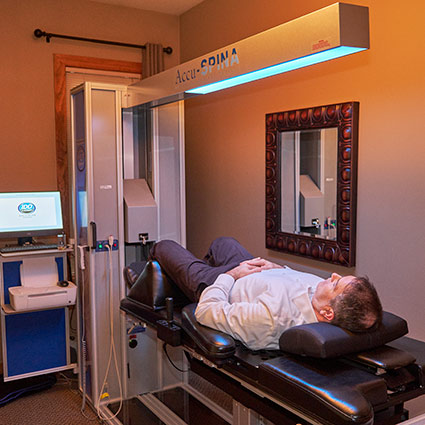Spinal Decompression in Port Huron & Marysville
 At Lakeview Chiropractic PC, our goal is to help as many clients as possible avoid surgery. If you have a disc problem that hasn’t responded to chiropractic care or physical therapy, decompression therapy may help.
At Lakeview Chiropractic PC, our goal is to help as many clients as possible avoid surgery. If you have a disc problem that hasn’t responded to chiropractic care or physical therapy, decompression therapy may help.
Preventing Surgery for Disc Issues
This technique is for anyone who has had an MRI to confirm a bulging disc, herniated disc, disc lesion, or disc degeneration. We offer a free, no-obligation consultation to review your imaging and see if you’re a good candidate for this therapy.
What to Expect
When you come in, we’ll lower you onto the table and hook you up to the equipment. As the table gently stretches and releases your spine, you can lie down and relax. This technique is so comfortable that many clients sleep through it.
We’ll then ice you down for 10-15 minutes, followed by another 10-15 minutes of laser therapy. You may be surprised by how much you enjoy coming in to take a break and unwind for an hour as your body does the hard work of healing for you.
Investing in Your Recovery
For most clients, we recommend 24-30 visits over the course of about a month. Each appointment lasts one hour. We’ll have you come in more often in the beginning, then space visits out as your body begins responding to care. Plan on seeing us 3-5 times a week. Recovery requires a serious commitment, but it’s worth it to avoid an invasive surgery with its own challenging recovery.
You’ll probably experience some pain relief during your first visit. We carefully monitor you at all times. If you ever feel uncomfortable or need something adjusted, we’re right there to address your needs.
This service is not covered by insurance. We’ll discuss payment at your first appointment.
Help Your Body Heal Itself Today
Schedule your first visit today to start the process of natural healing.
CONTACT US

